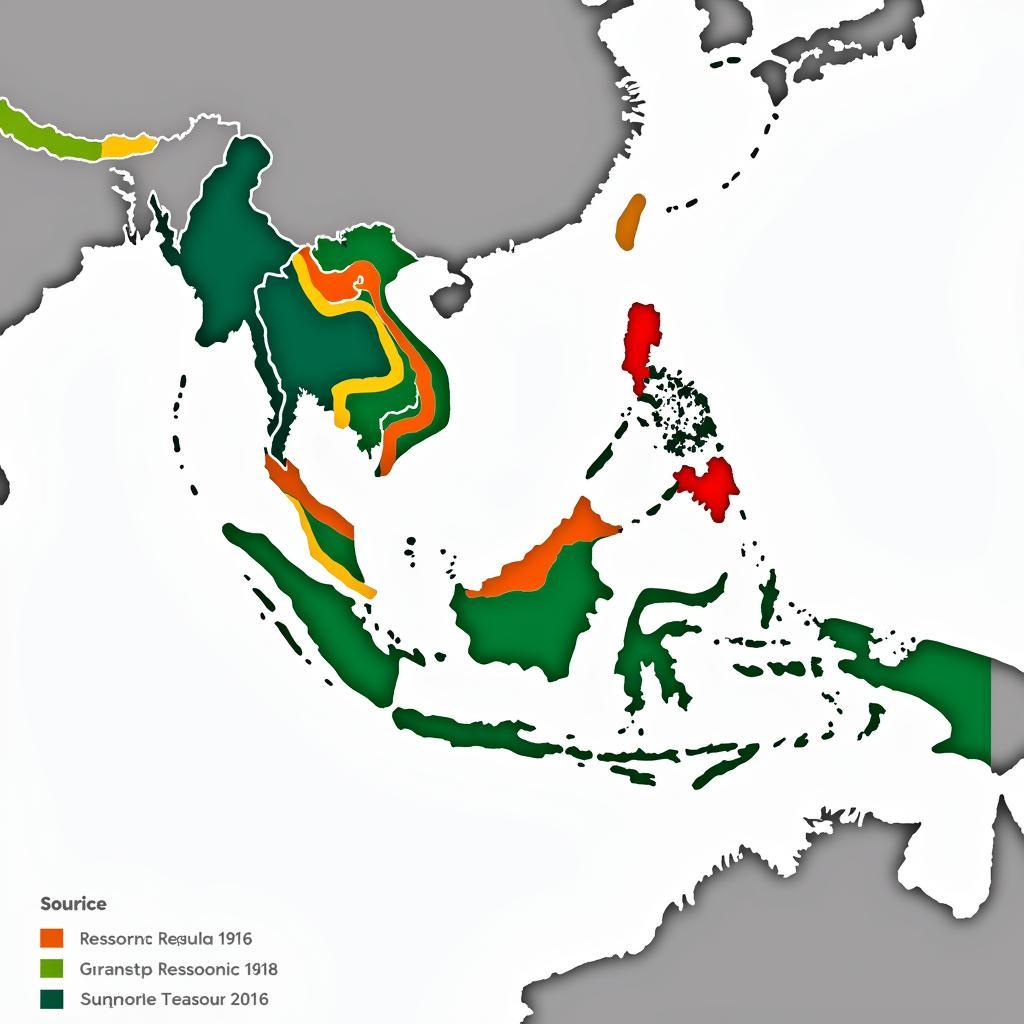Alkenones extracted using accelerated solvent extraction (ASE) offer a powerful tool for paleoclimate research. This technique allows scientists to efficiently isolate these organic compounds from sediment samples, providing valuable insights into past climates. This article delves into the intricacies of alkenone extraction using ASE, exploring its advantages, applications, and potential challenges.
Understanding Alkenones and Their Significance
Alkenones are long-chain unsaturated ketones produced by certain species of haptophyte algae, particularly Emiliania huxleyi. These algae thrive in the upper layers of the ocean, and their alkenone production is influenced by sea surface temperature (SST). The relative abundance of different alkenones, specifically the ratio of C37:2 to C37:3 alkenones, known as the Uk’37 index, is directly related to the SST during the algae’s growth. This relationship allows scientists to reconstruct past SSTs by analyzing alkenones preserved in marine sediments. This information is crucial for understanding past climate change and predicting future trends.
The Advantages of ASE for Alkenone Extraction
Traditional methods for extracting alkenones from sediments, such as Soxhlet extraction, can be time-consuming and require large volumes of solvent. ASE offers a significant improvement over these methods. ASE uses elevated temperature and pressure to accelerate the extraction process, significantly reducing extraction time and solvent consumption. This makes ASE a more efficient and environmentally friendly alternative. Furthermore, ASE’s closed-system design minimizes the risk of sample contamination and loss of volatile compounds.
Key Benefits of Using ASE:
- Reduced extraction time: ASE can complete extractions in a fraction of the time compared to traditional methods.
- Lower solvent usage: ASE requires significantly less solvent, minimizing environmental impact and cost.
- Improved efficiency: ASE provides higher extraction yields, ensuring more complete recovery of alkenones.
- Reduced contamination risk: The closed-system design of ASE minimizes the potential for sample contamination.
Applications of Alkenone Analysis in Paleoclimatology
Alkenone analysis, facilitated by ASE extraction, has become a cornerstone of paleoclimatology. By reconstructing past SSTs, scientists can gain valuable insights into a wide range of climate phenomena, including:
- Long-term climate change: Alkenone records spanning millennia provide a valuable perspective on the natural variability of Earth’s climate.
- Abrupt climate shifts: Alkenones can reveal rapid changes in SST, offering clues about the mechanisms driving these events.
- Regional climate patterns: Alkenone data from different locations can be used to reconstruct past regional climate variations.
- Ocean circulation changes: Alkenones can be used to track changes in ocean currents and their influence on climate.
“Alkenone analysis using ASE has revolutionized our ability to reconstruct past sea surface temperatures,” says Dr. Emily Carter, a leading paleoclimatologist at the University of California, Berkeley. “The precision and efficiency of this technique have opened up new avenues for understanding past climate change.”
Potential Challenges and Considerations
While ASE offers significant advantages, certain challenges need to be considered:
- Optimization of extraction parameters: Achieving optimal extraction efficiency requires careful optimization of temperature, pressure, and solvent selection.
- Sample matrix effects: The composition of the sediment matrix can influence extraction efficiency and require adjustments to the ASE method.
- Cost of equipment: ASE instrumentation can be expensive, which may be a barrier for some research groups.
Conclusion
Alkenones Extracted Using Ase provide a powerful tool for reconstructing past sea surface temperatures and understanding climate change. The efficiency and precision of ASE make it a valuable technique for paleoclimate research. While challenges exist, ongoing advancements in ASE technology and methodology continue to improve the accuracy and reliability of alkenone-based climate reconstructions. Alkenones extracted using ASE will undoubtedly continue to play a crucial role in unraveling the complexities of Earth’s past climate.
FAQs
- What are alkenones?
- How is the Uk’37 index calculated?
- What are the advantages of using ASE for alkenone extraction?
- What are the applications of alkenone analysis in paleoclimatology?
- What are the challenges of using ASE for alkenone extraction?
- How does ASE compare to other extraction methods?
- What is the future of alkenone-based climate reconstructions?
Scenarios
Scenario 1: A researcher is interested in studying the impact of past El Niño events on sea surface temperatures in the Pacific Ocean. They can use alkenones extracted using ASE from sediment cores to reconstruct past SSTs and identify patterns associated with El Niño events.
Scenario 2: A museum curator is preparing an exhibit on ancient climates. They can use alkenone data obtained through ASE extraction to illustrate how past climates have varied over time and the impact of these changes on ecosystems.
Further Exploration
For more information on related topics, explore these resources on our website:
- The History of Paleoclimatology
- The Impact of Climate Change on Marine Ecosystems
- Advances in Analytical Techniques for Environmental Research
Need support? Contact us 24/7: Phone: 0369020373, Email: [email protected] or visit us at: Thôn Ngọc Liễn, Hiệp Hòa, Bắc Giang, Việt Nam.

